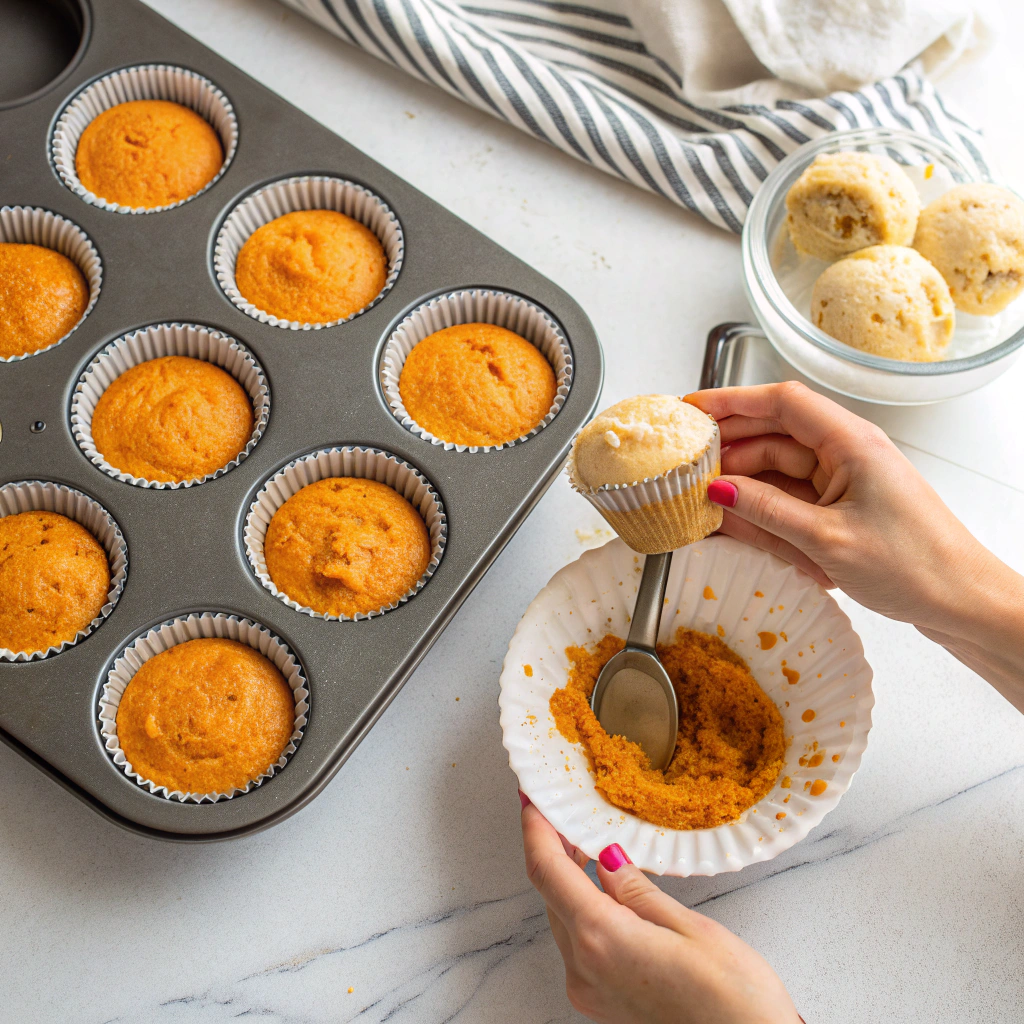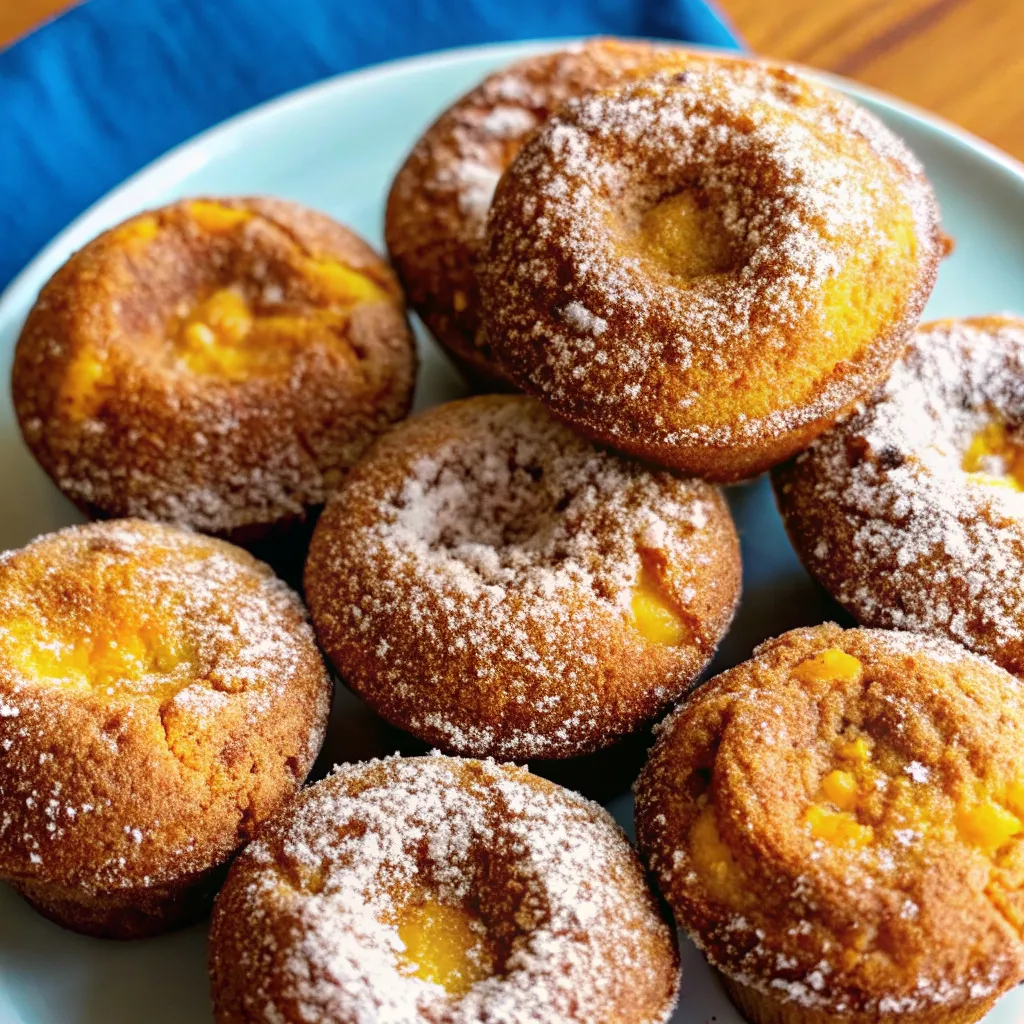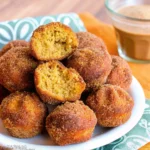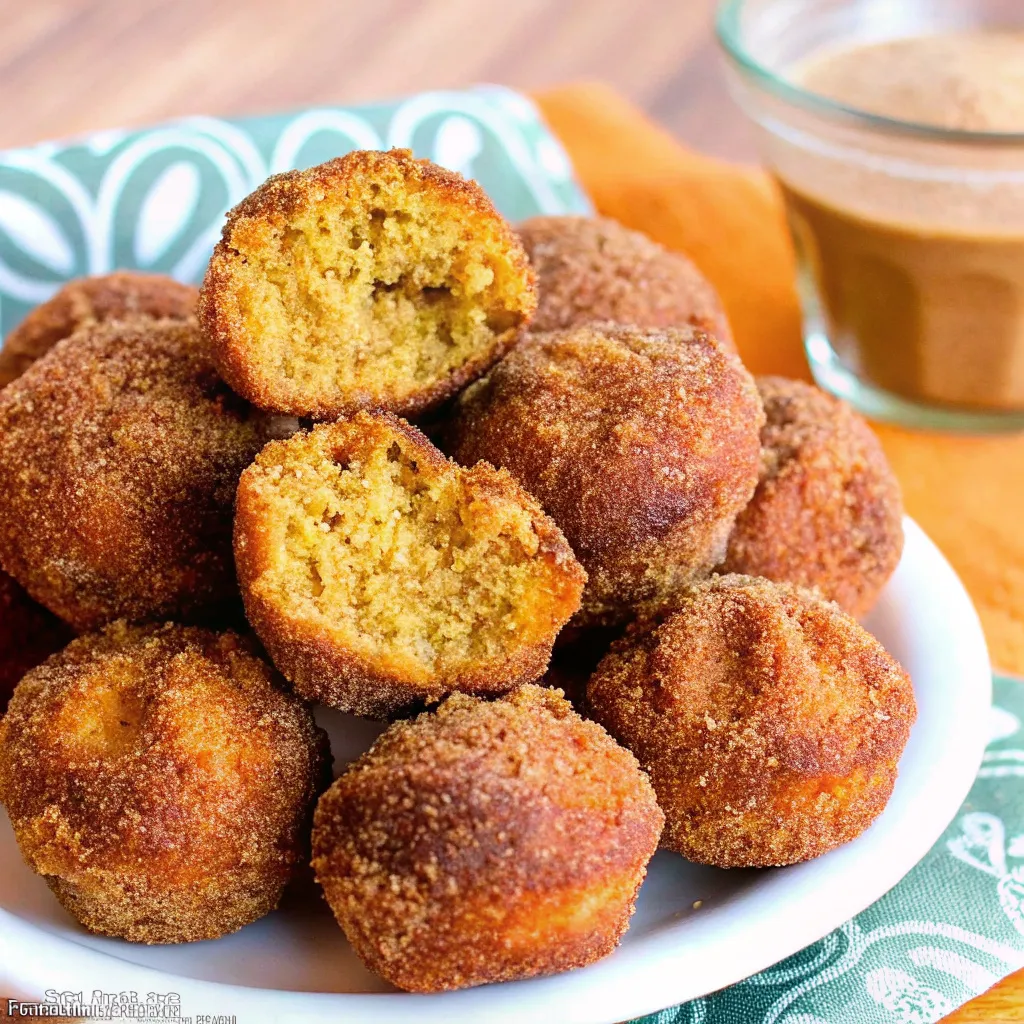The secret to bakery-quality pumpkin muffins lies in one surprising baking technique that most home bakers overlook. While countless recipes promise perfect results, many fall short of delivering the moist, fluffy, dome-topped pumpkin muffins you’d find at your favorite bakery. The problem isn’t just with ingredients—it’s with technique.
Many pumpkin muffin recipes result in dense, flat, or overly sweet muffins that lack the professional bakery quality families crave during fall season. These disappointing results often stem from incorrect mixing methods, improper temperature control, and inadequate understanding of how ingredients interact during the baking process.
Today, you’ll master the art of creating perfectly domed, moist, and flavorful pumpkin muffins with professional techniques that transform ordinary ingredients into extraordinary autumn treats. This comprehensive guide reveals the high-temperature start method, optimal ingredient ratios, and troubleshooting solutions that ensure success every single time.
Table of Contents
Why This Pumpkin Muffin Recipe Works: The Science Behind Perfect Results
Understanding the science of muffin baking techniques is crucial for achieving consistent, professional results with your pumpkin muffins. The key lies in three fundamental principles that most home bakers don’t fully grasp.
High-Temperature Start Technique
The secret to achieving those coveted bakery-style dome tops starts with baking your pumpkin muffins at 425°F (220°C) for the first 5 minutes, then reducing to 375°F (190°C) for the remaining baking time. This high-temperature start creates rapid steam expansion within the batter, forcing the muffin tops to rise dramatically before the structure sets.
This technique works because the initial blast of heat causes the liquid components in your pumpkin muffin batter to vaporize quickly, creating lift before the proteins coagulate and starches gelatinize. Without this temperature manipulation, muffins tend to rise slowly and evenly, resulting in flat, less appealing tops.
Ingredient Ratios for Moisture
Perfect pumpkin muffins require precise ratios of wet to dry ingredients. The ideal formula maintains a 1:1.2 ratio of dry ingredients to wet ingredients by weight. This balance ensures adequate moisture without creating a batter that’s too thin to hold its structure during baking.
Pumpkin puree contributes significant moisture and fiber, but it also adds density. Counteracting this requires the right amount of leavening agents—typically 1½ teaspoons of baking powder per cup of flour, plus ¼ teaspoon of baking soda to react with the acidic components in pumpkin.
Spice Balance for Authentic Flavor
The flavor profile of exceptional pumpkin muffins depends on carefully balanced warm spices. The optimal blend includes 1½ teaspoons cinnamon, ½ teaspoon ground ginger, ¼ teaspoon nutmeg, and ⅛ teaspoon ground cloves per dozen muffins. This ratio provides warmth without overwhelming the delicate pumpkin flavor.
Essential Ingredients for the Best Pumpkin Muffins
Creating outstanding pumpkin muffins begins with selecting high-quality ingredients and understanding how each component contributes to the final result. Every ingredient serves a specific purpose in achieving that perfect texture and flavor balance.
Pumpkin Puree Selection Guide
Not all pumpkin purees are created equal for pumpkin muffins. Choose 100% pure pumpkin puree without added spices or sugar. Libby’s and Farmer’s Market Organic are consistently reliable brands that provide the smooth texture and concentrated flavor needed for bakery-quality results.
For the most comprehensive information about selecting and using pumpkin puree, consult this comprehensive pumpkin puree guide which covers seasonal availability and quality indicators.
Avoid pumpkin pie filling, which contains added sugars and spices that will throw off your carefully balanced recipe. If using fresh pumpkin, ensure it’s thoroughly cooked and strained to remove excess moisture that could make your muffins soggy.
Spice Combinations and Substitutions
While individual spices offer the best flavor control for pumpkin muffins, pumpkin pie spice can substitute at a 2:1 ratio (use 1 teaspoon pumpkin pie spice for every 2 teaspoons of individual spices called for). For precise measurements and substitution ratios, reference this baking spice measurement reference.
Fresh spices make a noticeable difference in flavor intensity. Replace ground spices that have been in your pantry longer than one year for the most vibrant taste in your pumpkin muffins.
Oil vs Butter: Which Works Better
Vegetable oil produces more tender, moist pumpkin muffins than butter because oil remains liquid at room temperature, keeping the crumb soft longer. Use neutral-flavored oils like canola or vegetable oil rather than olive oil, which can impart unwanted flavor.
For those preferring butter’s flavor, use melted unsalted butter but expect a slightly denser texture. The trade-off is worthwhile if you prefer butter’s rich taste in your fall baking.
Step-by-Step Pumpkin Muffin Instructions
Following proper mixing techniques and timing ensures your pumpkin muffins turn out perfectly every time. These detailed instructions include visual cues and troubleshooting tips for guaranteed success.
Prep and Temperature Setup
Preheat your oven to 425°F (220°C) and line a 12-cup muffin tin with paper liners or grease with cooking spray. This initial high temperature is crucial for achieving the signature dome tops that characterize professional-quality pumpkin muffins.
Ensure all ingredients are at room temperature before beginning. Cold ingredients don’t combine evenly, leading to dense, unevenly textured muffins. Take eggs and pumpkin puree out of the refrigerator 30 minutes before baking.
Mixing Techniques for Perfect Texture
In a large bowl, whisk together 2 cups all-purpose flour, 1½ teaspoons baking powder, ¼ teaspoon baking soda, 1½ teaspoons cinnamon, ½ teaspoon ground ginger, ¼ teaspoon nutmeg, ⅛ teaspoon ground cloves, and ½ teaspoon salt.
In a separate bowl, combine 1 cup pumpkin puree, ½ cup vegetable oil, 2 large eggs, 1⅓ cups granulated sugar, and ⅓ cup water. Whisk until smooth and well combined.

Pour the wet ingredients into the dry ingredients and fold together using a rubber spatula until just combined. The batter should look slightly lumpy—overmixing develops gluten, resulting in tough pumpkin muffins. Stop mixing as soon as no dry flour streaks remain visible.
Baking and Timing Guidelines
Divide batter evenly among muffin cups, filling each about ⅔ full. An ice cream scoop ensures consistent portion sizes and professional-looking pumpkin muffins.
Bake at 425°F (220°C) for 5 minutes, then reduce temperature to 375°F (190°C) and continue baking for 15-18 minutes. Muffins are done when tops spring back lightly when touched and a toothpick inserted in the center comes out with just a few moist crumbs.
Cool in the pan for 5 minutes before transferring to a wire rack. This brief cooling period prevents sticking while avoiding condensation that makes bottoms soggy.
Pumpkin Muffin Variations and Add-Ins
Transform your basic pumpkin muffins into exciting variations with these tested combinations and measurements. Each variation maintains the perfect texture while adding complementary flavors and textures.
Chocolate Chip and Nut Variations
For chocolate chip pumpkin muffins, fold ¾ cup mini chocolate chips into the batter just before scooping. Mini chips distribute more evenly than regular-sized chips and won’t sink to the bottom during baking.
Walnut pumpkin muffins benefit from ½ cup chopped walnuts toasted for 5 minutes at 350°F before adding to the batter. Toasting intensifies the nuts’ flavor and prevents them from becoming soggy.
For ultimate indulgence, combine ½ cup mini chocolate chips with ¼ cup chopped toasted pecans in your pumpkin muffin batter.
Healthy Substitutions and Dietary Adaptations
Create healthier pumpkin muffins by replacing half the all-purpose flour with whole wheat pastry flour. This substitution adds fiber and nutrients while maintaining tender texture.
For reduced sugar versions, decrease granulated sugar to 1 cup and add ¼ cup unsweetened applesauce. The natural sweetness of pumpkin puree helps compensate for reduced added sugar.
Dairy-free pumpkin muffins work perfectly with plant-based milk substitutes like almond or oat milk in place of any dairy components.
Seasonal Flavor Combinations
Apple cinnamon pumpkin muffins feature ½ cup finely diced apples and an extra ½ teaspoon cinnamon folded into the basic batter. Choose firm apples like Granny Smith that hold their shape during baking.
Cranberry orange pumpkin muffins combine ½ cup dried cranberries with 1 tablespoon fresh orange zest for a bright, festive flavor perfect for holiday celebrations.
These variations pair beautifully with complementary fall recipes for complete seasonal menus.
Storage, Freezing, and Make-Ahead Tips
Proper storage techniques keep your pumpkin muffins fresh and delicious for days or even months when frozen correctly. These professional tips ensure optimal texture and flavor retention.
Optimal Storage Methods
Store completely cooled pumpkin muffins in an airtight container at room temperature for up to 3 days. Place a paper towel in the bottom of the container to absorb excess moisture that could make muffins soggy.
For longer storage, refrigerate muffins for up to 1 week in airtight containers. Bring refrigerated muffins to room temperature before serving, or warm briefly in the microwave for 10-15 seconds to restore soft texture.
Freezing Techniques for Best Quality
Freeze individual pumpkin muffins by wrapping each completely cooled muffin in plastic wrap, then placing wrapped muffins in freezer bags. This double-wrapping prevents freezer burn and maintains moisture for up to 3 months.
Label freezer bags with the date and contents for easy identification. Thaw frozen muffins at room temperature for 2-3 hours, or microwave from frozen for 30-45 seconds for quick serving.
Make-Ahead Batter Preparation
Prepare pumpkin muffin batter up to 24 hours in advance and refrigerate in a covered bowl. Cold batter actually produces slightly taller muffins because the chilled batter takes longer to heat through, extending the rising time.
Stir chilled batter gently before scooping, as ingredients may separate slightly during refrigeration. Add 1-2 minutes to the baking time when using cold batter straight from the refrigerator.
Troubleshooting Common Pumpkin Muffin Problems
Even experienced bakers encounter issues with pumpkin muffins occasionally. These solutions address the most common problems and prevent future baking disasters.
Dense or Heavy Muffins
Dense pumpkin muffins typically result from overmixing the batter or using too much flour. Always measure flour by spooning it into measuring cups and leveling with a knife rather than scooping directly from the bag, which compacts flour and adds excess.
Overmixing develops gluten strands that create tough, chewy texture. Mix just until ingredients combine—lumpy batter is perfectly normal and desirable for tender muffins.
Flat Tops and Poor Rise
Flat-topped pumpkin muffins often indicate old leavening agents or incorrect oven temperature. Replace baking powder and baking soda every 6 months for optimal effectiveness. Test baking powder by adding ½ teaspoon to ¼ cup hot water—it should bubble vigorously.
Ensure your oven temperature is accurate using an oven thermometer. Many ovens run 25-50 degrees off their displayed temperature, which significantly affects muffin rise and texture.
Overly Sweet or Bland Flavor
Balanced pumpkin muffins shouldn’t taste overwhelmingly sweet or bland. If muffins taste too sweet, reduce sugar by ¼ cup and increase spices slightly to enhance flavor complexity.
Bland muffins need more spice or salt to brighten flavors. Add an extra ¼ teaspoon salt and increase cinnamon to 2 teaspoons for more pronounced taste.
For inspiration beyond muffins, explore other seasonal baking projects that showcase autumn flavors in different formats.
Frequently Asked Questions
Can I use fresh pumpkin instead of canned pumpkin puree for muffins?
Yes, you can use fresh pumpkin for pumpkin muffins, but it requires proper preparation. Roast pumpkin halves cut-side down at 400°F for 45 minutes until tender, then scrape flesh and puree until smooth. Fresh pumpkin often contains more water than canned, so drain pureed fresh pumpkin in a fine-mesh strainer for 30 minutes before using. This extra step ensures your muffins won’t be soggy.
How do I make pumpkin muffins without eggs for vegan diets?
Replace each egg in pumpkin muffins with 1 tablespoon ground flaxseed mixed with 3 tablespoons water, let sit 5 minutes until gel-like. Alternatively, use ¼ cup unsweetened applesauce per egg. Commercial egg replacers also work following package directions. Vegan versions may be slightly denser but still deliciously moist and flavorful.
Why are my pumpkin muffins sinking in the middle?
Pumpkin muffins sink when the batter is overmixed, oven temperature is too low, or leavening agents are expired. Overmixing creates too much gluten, causing structure to collapse. Ensure oven reaches proper temperature before baking and replace baking powder every 6 months. Don’t open oven door during first 15 minutes of baking, as temperature fluctuations cause sinking.
What’s the best way to reheat frozen pumpkin muffins?
For best results with frozen pumpkin muffins, thaw at room temperature for 2-3 hours, then warm in 350°F oven for 5 minutes. For quick reheating, microwave frozen muffins for 45-60 seconds, checking every 15 seconds. Avoid over-microwaving, which creates tough, rubbery texture. Room temperature thawing preserves the original texture better than rapid reheating methods.
Can I make mini pumpkin muffins with this recipe?
Absolutely! This pumpkin muffin recipe adapts perfectly for mini muffins. Use the same 425°F start temperature, but reduce baking time to 3 minutes at high heat, then 8-12 minutes at 375°F. Fill mini muffin cups ½ full rather than ⅔ full. This recipe yields approximately 36 mini muffins instead of 12 regular-sized ones.
How long do homemade pumpkin muffins stay fresh?
Properly stored pumpkin muffins remain fresh at room temperature for 3 days, refrigerated for 1 week, or frozen for up to 3 months. Store in airtight containers with paper towels to absorb moisture. Day-old muffins often taste even better as flavors meld overnight. For longest freshness, freeze individual wrapped muffins and thaw as needed.

Perfect pumpkin muffins are absolutely achievable when you understand the science behind successful techniques. The high-temperature start method creates those coveted bakery-style dome tops, while proper ingredient ratios and mixing techniques ensure consistently moist, tender results every time you bake.
This versatile base recipe adapts beautifully to countless variations, dietary restrictions, and personal preferences. Whether you prefer classic spiced versions or creative combinations with chocolate chips and nuts, the fundamental techniques remain the same. The storage and make-ahead convenience makes these muffins perfect for busy families and meal planning.
These homemade treats work wonderfully as school-friendly snack options that kids and adults love equally. Try this recipe today and discover how simple techniques transform ordinary ingredients into extraordinary autumn memories. Share your results and variations—your family will request these pumpkin muffins throughout the entire fall season and beyond.
Print
Easy Pumpkin Muffins Recipe: Moist & Fluffy Bakery-Style
- Total Time: 32 minutes
- Yield: 12 muffins 1x
- Diet: Vegetarian
Description
These Bakery-Style Pumpkin Muffins deliver tall, domed tops and incredibly moist texture using a secret two-temperature baking method. Starting at high heat (425°F) creates dramatic rise for impressive bakery-style tops, while finishing at lower temperature ensures perfectly cooked centers. Packed with warm spices, real pumpkin puree, and your choice of mix-ins like chocolate chips or nuts, these muffins fill your kitchen with irresistible autumn aromas. The simple one-bowl method makes them easy enough for beginners yet impressive enough for experienced bakers.
Ingredients
- 1¾ cups (219g) all-purpose flour, spooned and leveled
- 1 teaspoon baking soda
- 1½ teaspoons ground cinnamon
- 1½ teaspoons pumpkin pie spice
- ¼ teaspoon ground ginger
- ½ teaspoon salt
- ½ cup (120ml) vegetable oil or melted coconut oil
- ½ cup (100g) granulated sugar
- ½ cup (100g) packed light or dark brown sugar
- 1½ cups (340g) canned pumpkin puree (not pumpkin pie filling)
- 2 large eggs
- ¼ cup (60ml) milk (dairy or nondairy)
- Optional Add-Ins:
- 1 cup chocolate chips or chopped nuts or ¾ cup dried cranberries
Instructions
- Preheat and Prepare: Preheat oven to 425°F (218°C). Spray 12-count muffin pan with nonstick spray or line with cupcake liners.
- Mix Dry Ingredients: In large bowl, whisk flour, baking soda, cinnamon, pumpkin pie spice, ginger, and salt together until combined. Set aside.
- Combine Wet Ingredients: In medium bowl, whisk oil, granulated sugar, brown sugar, pumpkin puree, eggs, and milk together until well combined and smooth.
- Fold Together: Pour wet ingredients into dry ingredients and fold everything together gently just until combined with no flour pockets remaining. Fold in optional mix-ins if using.
- Fill Muffin Cups: Spoon batter into liners, filling them all the way to the top for bakery-style domed tops.
- Two-Temperature Baking: Bake for 5 minutes at 425°F. Without opening oven, reduce temperature to 350°F (177°C) and bake for additional 16-17 minutes until toothpick inserted in center comes out clean. Total baking time is 21-22 minutes.
- Cool and Serve: Allow muffins to cool for 5 minutes in pan before removing. Serve warm or at room temperature.
Notes
Two-Temperature Secret: Starting at high temperature (425°F) for 5 minutes creates dramatic rise for tall bakery-style tops, then lowering to 350°F ensures perfectly cooked centers without overbrowning. Pumpkin Pie Spice DIY: If you don’t have it, use ¼ tsp each of cinnamon, cloves, nutmeg, and allspice plus ½ tsp ginger. Don’t omit the separate 1½ tsp cinnamon. Mini Muffins: For about 30 mini muffins, skip the high temperature and bake at 350°F for 11-13 minutes. Storage: Store tightly covered at room temperature up to 1 week. Freeze up to 3 months, thaw overnight in refrigerator. Mix-In Options: Chocolate chips, chopped nuts, or dried cranberries all work beautifully – add right before spooning into pan.
- Prep Time: 10 minutes
- Cook Time: 22 minutes
- Category: Breakfast
- Method: Baking
- Cuisine: American
Nutrition
- Serving Size: 1 muffin
- Calories: 215
- Sugar: 18g
- Sodium: 185mg
- Fat: 10g
- Saturated Fat: 1g
- Unsaturated Fat: 8g
- Trans Fat: 0g
- Carbohydrates: 30g
- Fiber: 2g
- Protein: 3g
- Cholesterol: 30mg

